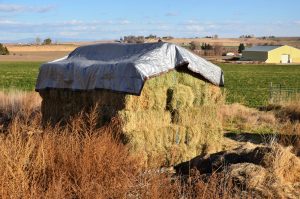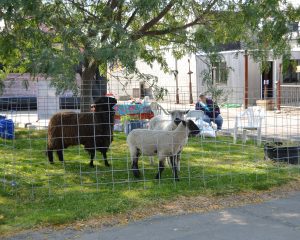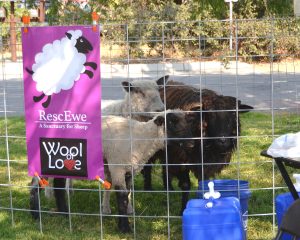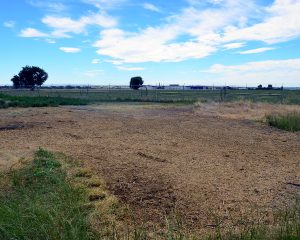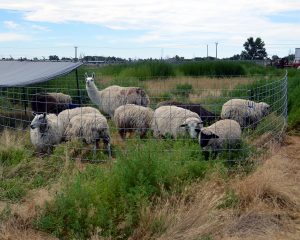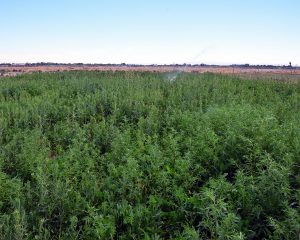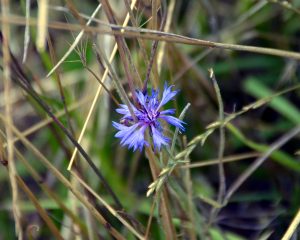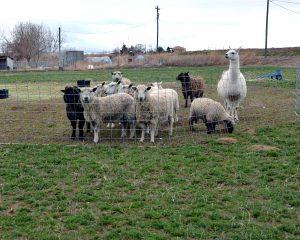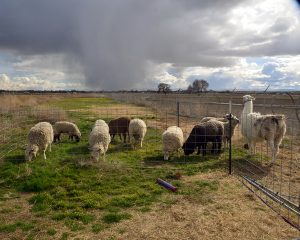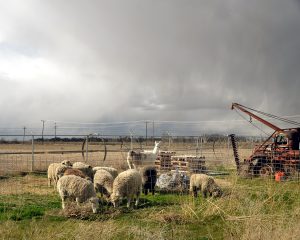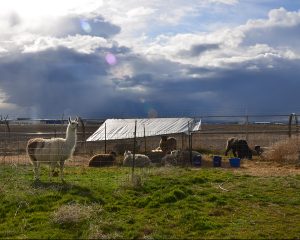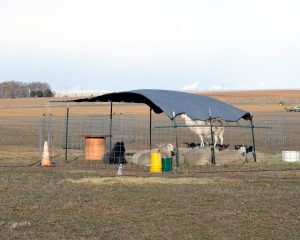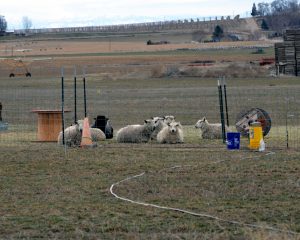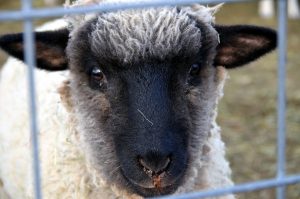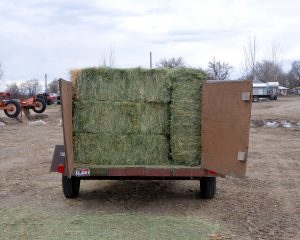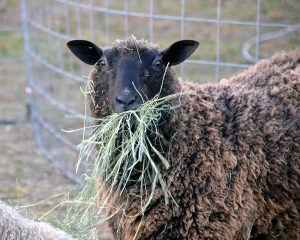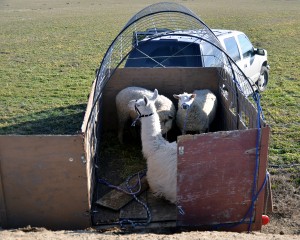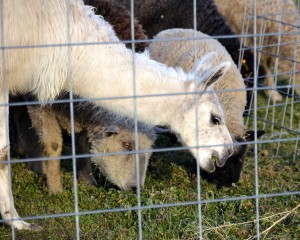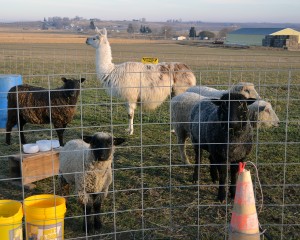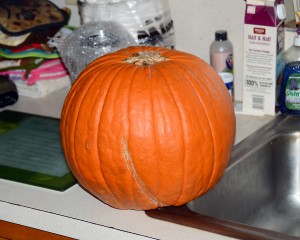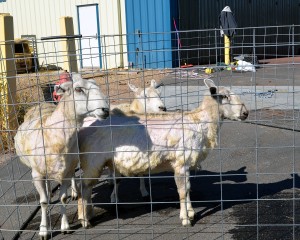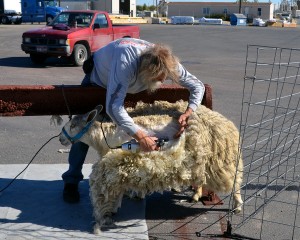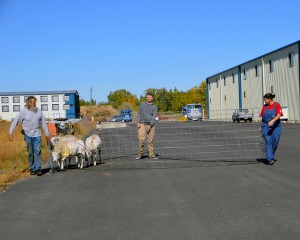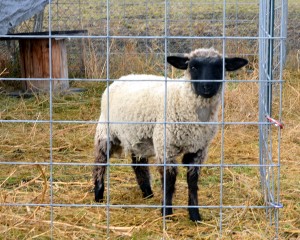 Del has finished his quarantine period. Well he finished his quarantine three weeks ago. He is acting like a healthy, happy lamb. His weight is good, his eye membranes look really good, and he is growing. Next week he gets his second CDT vaccination. So why is he still in the quarantine pen with Churchill? Well, first things first.
Del has finished his quarantine period. Well he finished his quarantine three weeks ago. He is acting like a healthy, happy lamb. His weight is good, his eye membranes look really good, and he is growing. Next week he gets his second CDT vaccination. So why is he still in the quarantine pen with Churchill? Well, first things first.
For those that do not know, Del came to us from the local animal shelter. He was picked up by animal control wandering the streets of the third largest city in Idaho. When the animal shelter took him in, they registered him as a 4 year old ewe, and named him Delilah. Of course he was none of those things. We started calling him Del. For those old enough to remember Del Shannon, and his famous hit song Runaway, this name will make more sense. Well, to me it makes sense. I assume most are like I am, it is hard for me to think of that song and not think of the movie American Graffiti. Truly iconic.
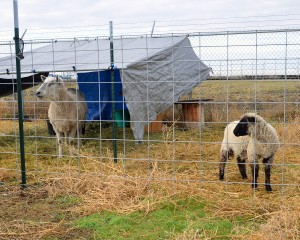 For his quarantine period, we paired Del with Churchill. Sure enough Del adopted Churchill right off, and Churchill has always been patient, and gentle with Del. It was cute how on day two, Del was following Churchill’s lead. Del wanted to do everything Big Bro Churchill did. When Churchill was drinking water, Del was there taking a drink too. When Churchill was laying in the shade chewing cud, Del was right there doing it too. When Churchill was grazing, Del was right there next to him eating the same plants, learning what was good and what was not.
For his quarantine period, we paired Del with Churchill. Sure enough Del adopted Churchill right off, and Churchill has always been patient, and gentle with Del. It was cute how on day two, Del was following Churchill’s lead. Del wanted to do everything Big Bro Churchill did. When Churchill was drinking water, Del was there taking a drink too. When Churchill was laying in the shade chewing cud, Del was right there doing it too. When Churchill was grazing, Del was right there next to him eating the same plants, learning what was good and what was not.
As Del became more confident and independent, he has given Churchill more space. We have been concerned about Del hanging out with an old fuddy duddy like Churchill. A lamb needs playmates. However, we need not have worried. Two weeks ago I peeked around the corner of the shop building, and from 300 feet away I saw what they had been hiding. Churchill was in front of their shelter, Del bumped Churchill’s head, and spun around and ran around through the shelter, coming back around from the opposite side. Churchill spun around just as Del bumped heads with him. Del took off and ran back around the shelter the opposite direction. Churchill spun around again to meet Del head on. Del bumped Churchill, and took off again… That is when Churchill realized I was standing there watching. Churchill immediately turned to me, straightened up and just stared at me. Del came blasting around the shelter, saw Churchill acting proper and all, and stopped in his tracks. Del calmly walked up, stood right along side Churchill, tilted his head against his Big Bro’s side, and started watching me too. Those of you who are familiar with that gesture in lambs, know that it is filled with all kinds of good and wonderful meaning.
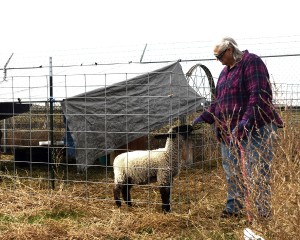 As for why Del is still in quarantine. When Del came to us, it was obvious that he was a bottle lamb. He is way too relaxed with humans and being handled. For bottle fed rams, the line between human and sheep can become blurred. When they mature they can be dangerous when in close contact with humans. The alternative is becoming a wether, which eliminates the dangerous behaviors and emotional volatility that rams experience. This really gives Del few career choices. A range ram where he will have little contact with people, or as a pet or companion wether. Even though Del looks really good, and has good conformation, his genetic background is unknown; making it risky to use him as a flock sire. So, that leaves wether. For long term health reasons, it is best to wait till a lamb is at least six months old to have them wethered. That leaves us with a problem in the short term. The main Rescewe flock has a ewe, and Del is all ram. Most times 1+1=2, but this time of the year, 1 + 1 may end up equaling 4.
As for why Del is still in quarantine. When Del came to us, it was obvious that he was a bottle lamb. He is way too relaxed with humans and being handled. For bottle fed rams, the line between human and sheep can become blurred. When they mature they can be dangerous when in close contact with humans. The alternative is becoming a wether, which eliminates the dangerous behaviors and emotional volatility that rams experience. This really gives Del few career choices. A range ram where he will have little contact with people, or as a pet or companion wether. Even though Del looks really good, and has good conformation, his genetic background is unknown; making it risky to use him as a flock sire. So, that leaves wether. For long term health reasons, it is best to wait till a lamb is at least six months old to have them wethered. That leaves us with a problem in the short term. The main Rescewe flock has a ewe, and Del is all ram. Most times 1+1=2, but this time of the year, 1 + 1 may end up equaling 4.
So, until he is wethered, Del is stuck in quarantine. Time to make an appointment with the Vet to have Del’s mind changed.
